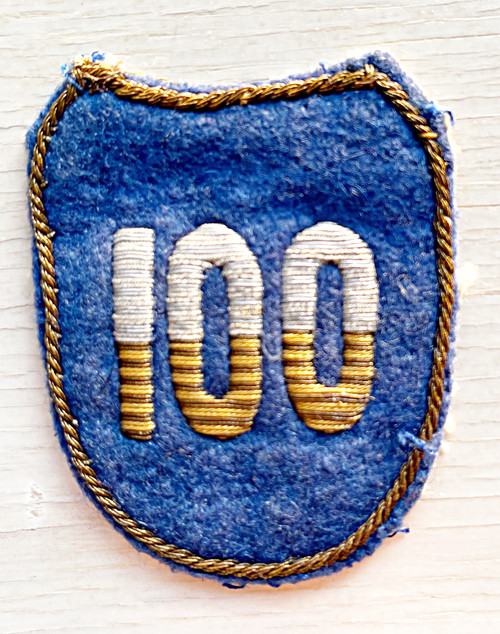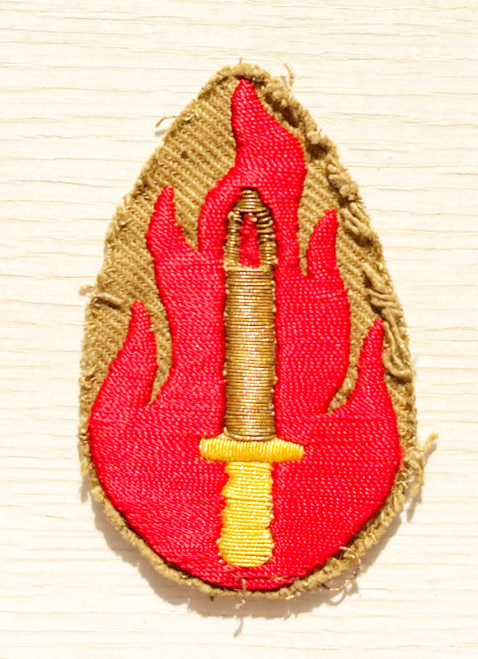3 inches
Mort Cohen collection
This brief article will discuss some of
the SSl associated with the 40th Infantry
Division during WW I and the Korean
War. The division had some unusual
SIs associated with it during those two
conflicts.
The 40th Infantry Division was
originally organized during WW I. The
division saw no combat; it served as a
depot division (to provide replacements).
The SSI for the 40th is a 12-rayed sun
on an equidistant blue square worn point
up. As with many units during WWI,there are many variations of the authorized SSI. The command staff of thedivision directed personnel to wear the SSI flat.
This was not a popular command,
and the troops, now on occupation duty,
rebelled by having the SSI made round.
Many examples of this style also exist.
During the Korean War, the 40th
Infantry Division was Federalized and
called up for active duty in Korea. The
familiar equidistant blue square was
morphed into a lozenge shape; red was
added to the sun, and the rays were
irregular, to give it a more explosive
«sunburst" effect. Additionally, a tab,which read "Ball of Fire"
" was also created, to be worn over the top of the
newly designed SSI.
There have been two explanations
for the change in the insignia. One
reason was that the command staff of the
division wanted to distribute the new
insignia to personnel who performed well
in combat; in this regard, it was similar to
a Combat Infantryman's Badge. The
second reason was that as the National
Guard (NG) personnel were rotated home,
and were replaced by regular army
personnel (usually draftees), field-grade
officers wanted to be able to distinguish
between the two.










